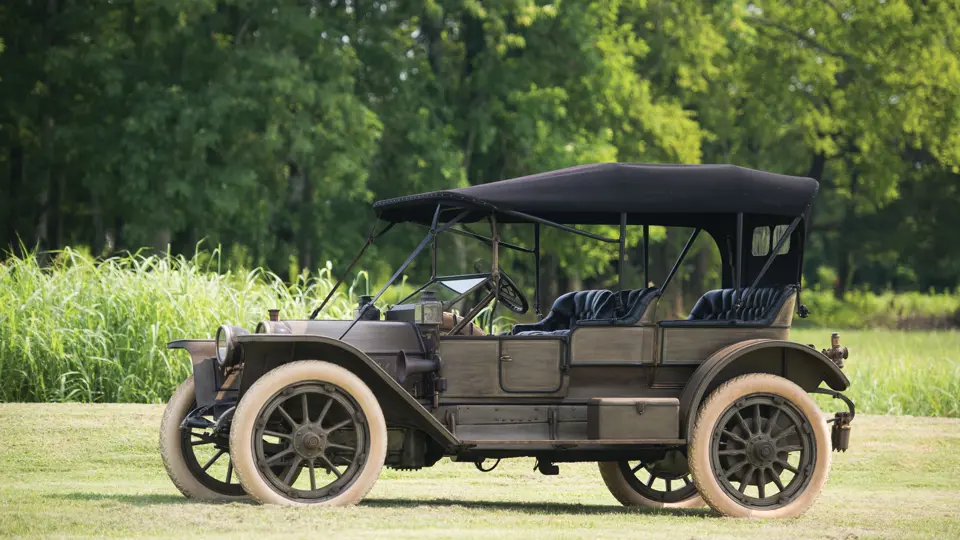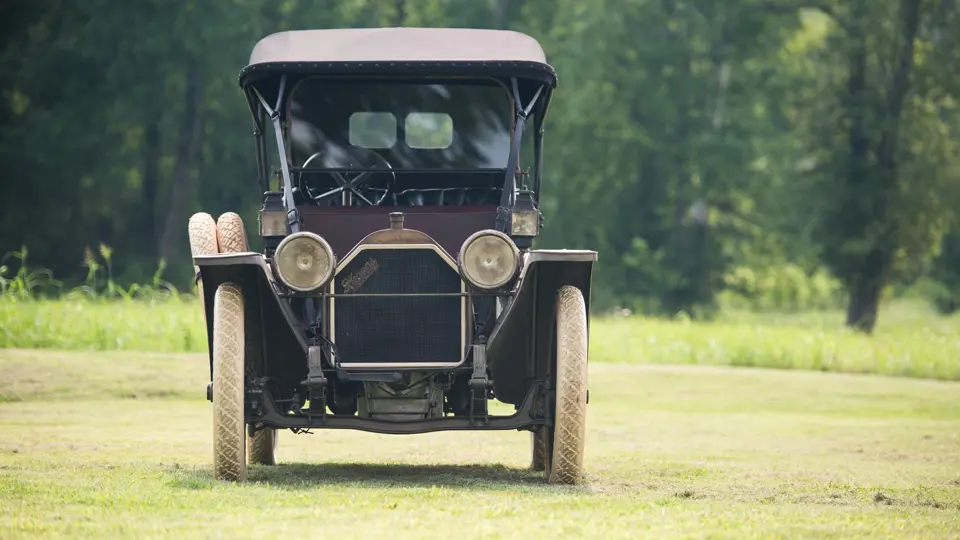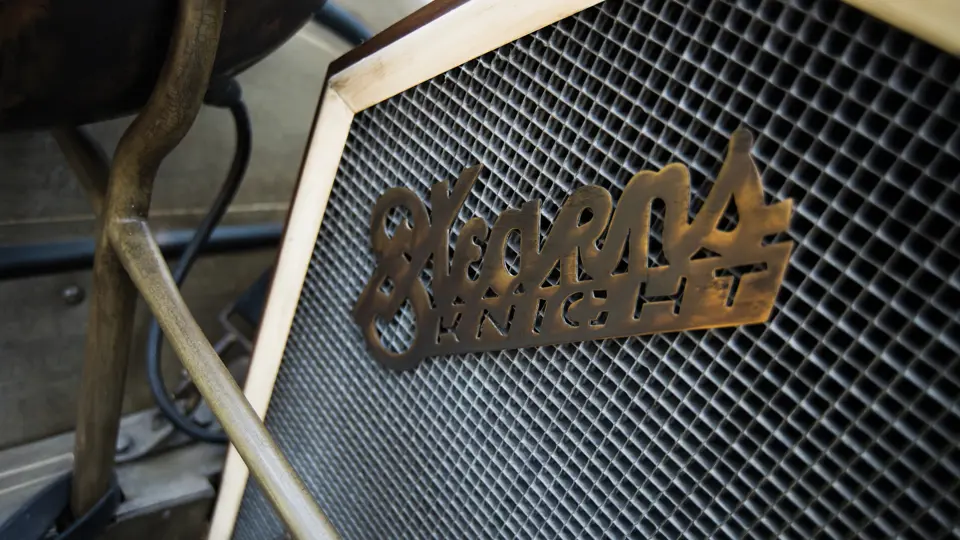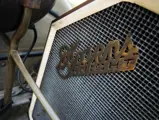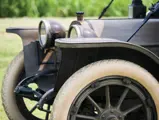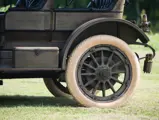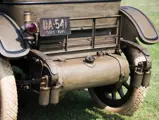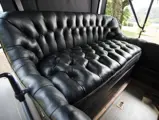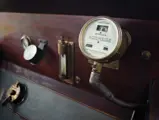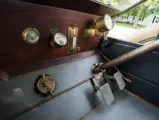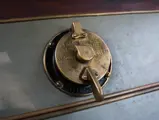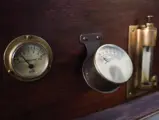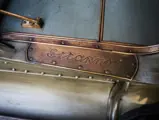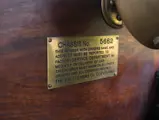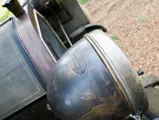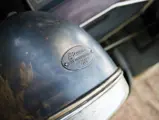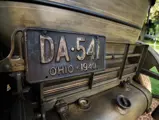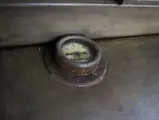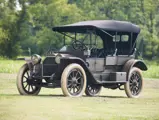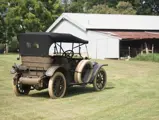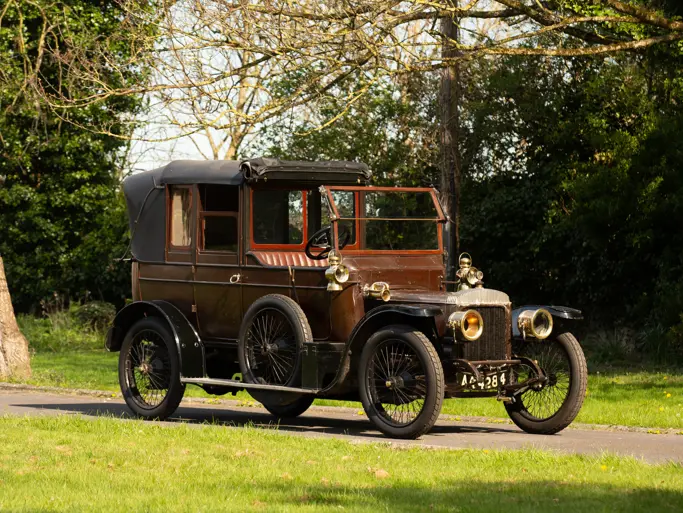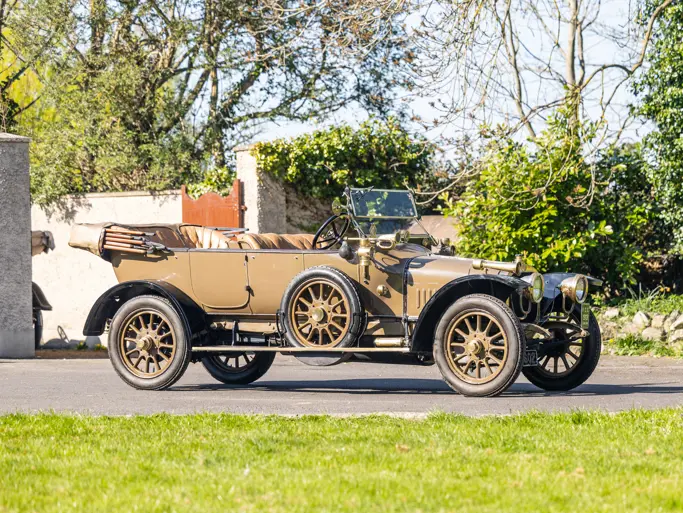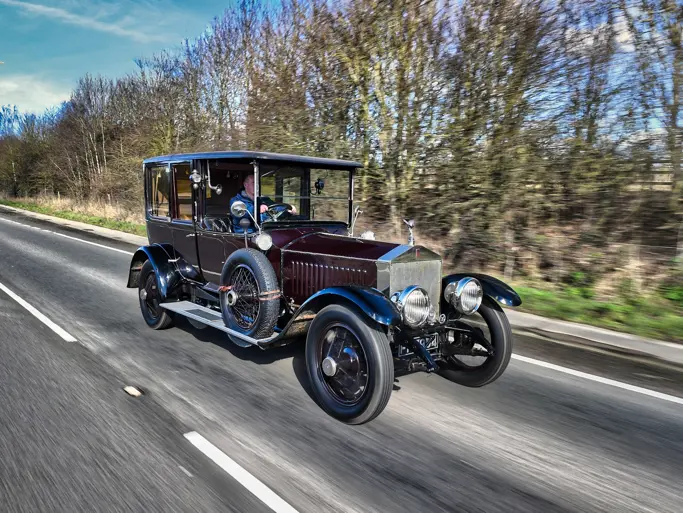28 rated hp, 312.1 cu. in. inline sleeve-valve four-cylinder engine, three-speed manual transaxle, shaft drive, solid front axle with semi-elliptical leaf springs, live rear axle with three-quarter-elliptical leaf springs, and two-wheel mechanical drum brakes. Wheelbase: 116 in.
When Knight sleeve valves are mentioned, the first thing that comes to mind is usually Willys-Knight, the best-known American car to use them. However, the luxury automaker F.B. Stearns Company, of Cleveland, Ohio, was actually the first to embrace the technology in this country, in 1911, and the only one to use them exclusively to the marque’s end in 1929.
Any Stearns-Knight is noteworthy, but this one is a member of a select society. From 1940, it was part of the legendary Barney Pollard Collection in Detroit. Barney amassed some 1,200 cars at the collection’s height. In order to save space, he stacked them vertically, like sausages, then built buildings over them. He had several auctions during the 1970s, which resulted in many rare cars being released for restoration. Cars stored nose up often rusted out at the back; others had bent fenders.
This Stearns was acquired by collector Bruce Replogle in New Jersey from the Pollard Collection, where it had remained undisturbed since discovery in 1940. He passed it on, unrestored, to Mike Kaltenecker in Idaho, who worked with Stearns authority Art Aseltine to correct the few minor modifications that had been made and return it to a complete and original state. It had been repainted in the 1920s, and the upholstery was tattered, while the fenders were bent from vertical storage, but otherwise, it was a good, solid car.
Harold Coker acquired the car from Kaltenecker in 2011. Due to its exceptional original condition, he made the decision to treat it to a unique “barn find” cosmetic restoration while fully restoring it mechanically. He sent it to restorer Paul Vaughan in Willow Street, Pennsylvania, who worked out the “antiqued” finish by trial and error. The car was brought to good mechanical running condition but without excessive cosmetics. The body required new wood and some metal repair. The result looks at first glance like old paint that has been carefully cleaned, until one looks closer. A Cleveland-built car, it is believed to have spent its pre-Pollard life in that region. The 1940 Ohio license plate, on the car when Barney acquired it, is still on the back.
It does not quite fit in any restoration category, so it has never been judged, but in 2013, it was displayed at the AACA Museum in Hershey during “Hershey week,” alongside a fully-restored Stearns-Knight sister car from the Stearns family that is now part of the permanent collection.
The upholstery is new black leather, in a soft, patina-like finish. The top is new black canvas, and the brightwork, a mix of brass and nickel, has been left in a dull state. The headlights are Vesta bullet-shaped electrics, while the side lamps are Adlake oil units, all of them original to the car. There are two horns, an electric Klaxon on the left and a bulb horn on the driver’s side splash apron. The windshield was manufactured by the Banker Wind Shield Company, of Pittsburgh, “expressly for F.B. Stearns Co.” Other equipment includes an exhaust cut-out and an electric starter. The engine, of course, has Charles Knight’s sleeve valves and a Bosch dual-coil ignition.
The antique finish is nicely accented by Stearns’ patented hallmark white-line radiator and the 36x4½ all-white Firestone Non-Skid tires. There are only two known surviving 1912 Stearns Toy Tonneau Runabouts. The other one is in the AACA Museum collection, so this is certainly the only chance to acquire one for the foreseeable future.




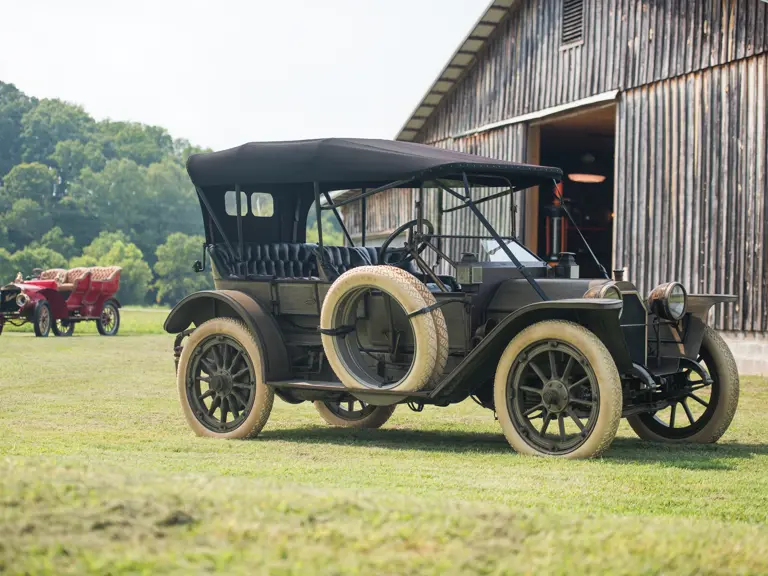

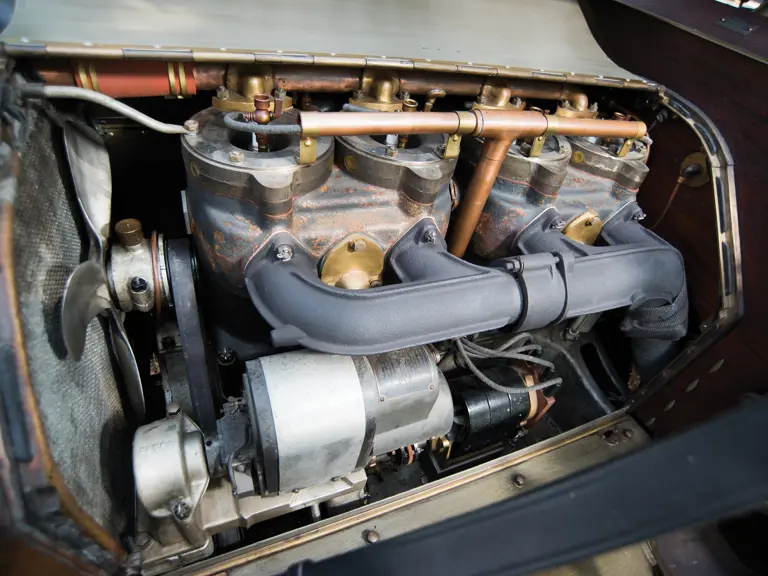
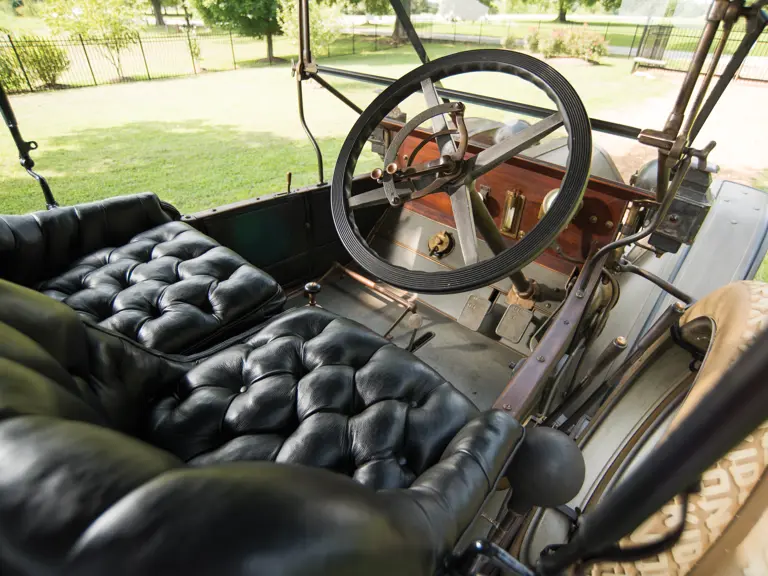
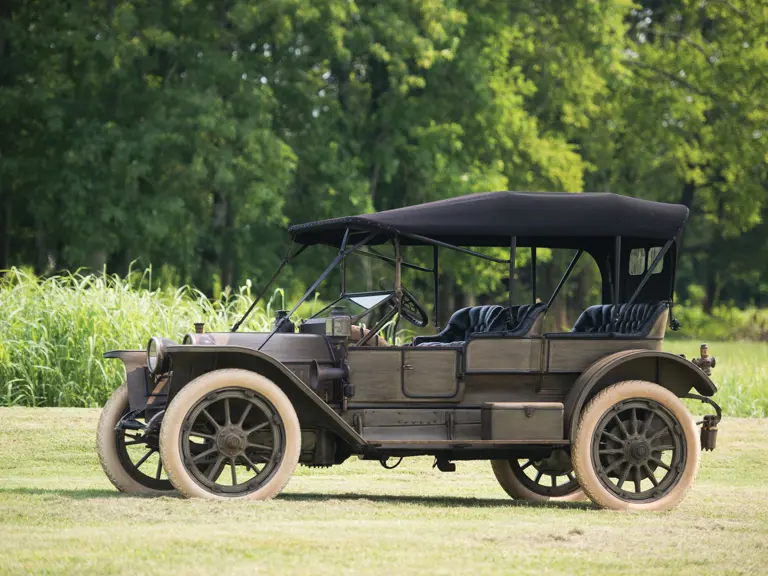
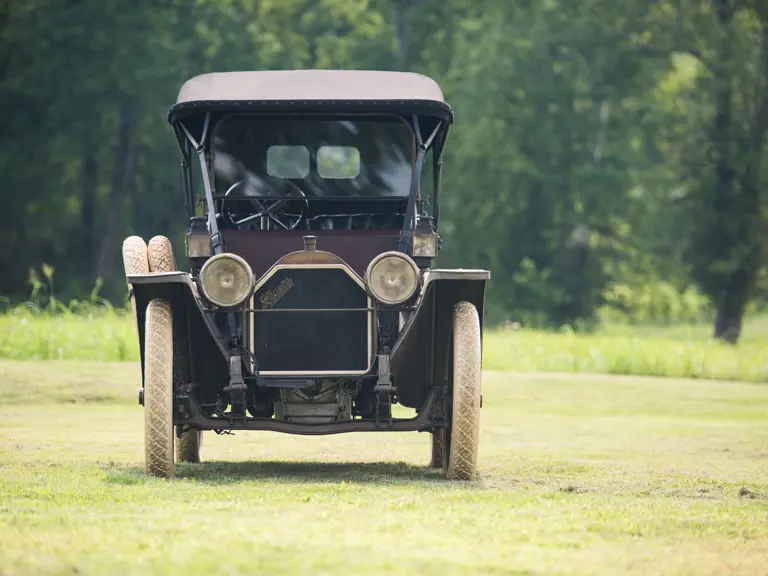
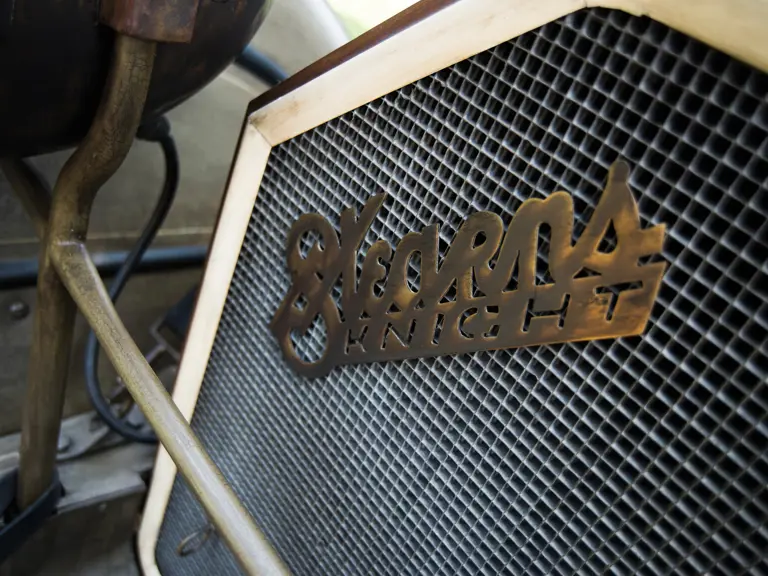
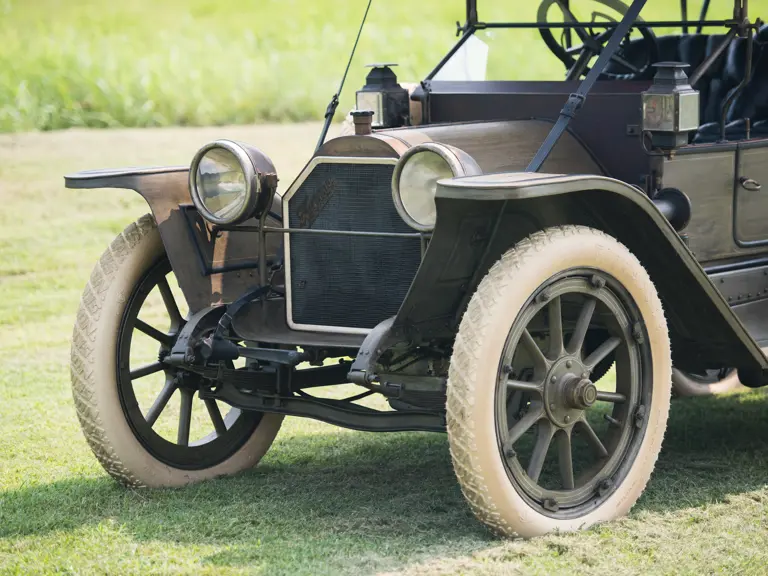
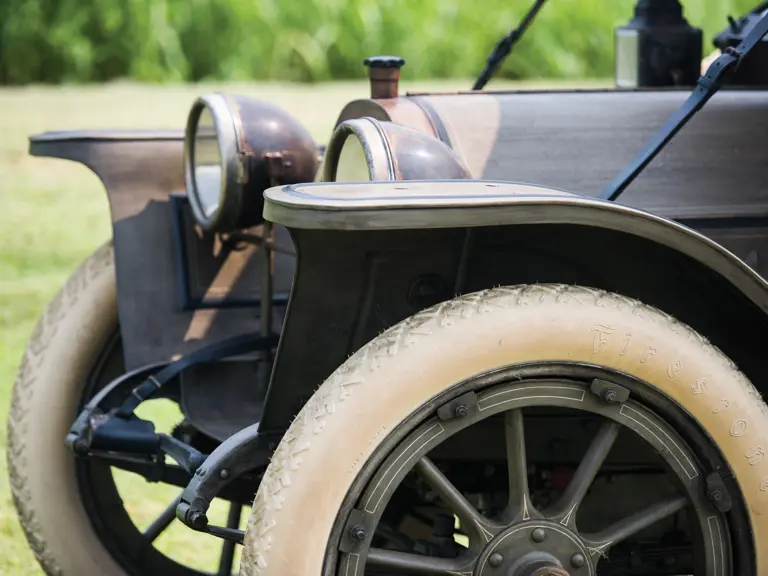
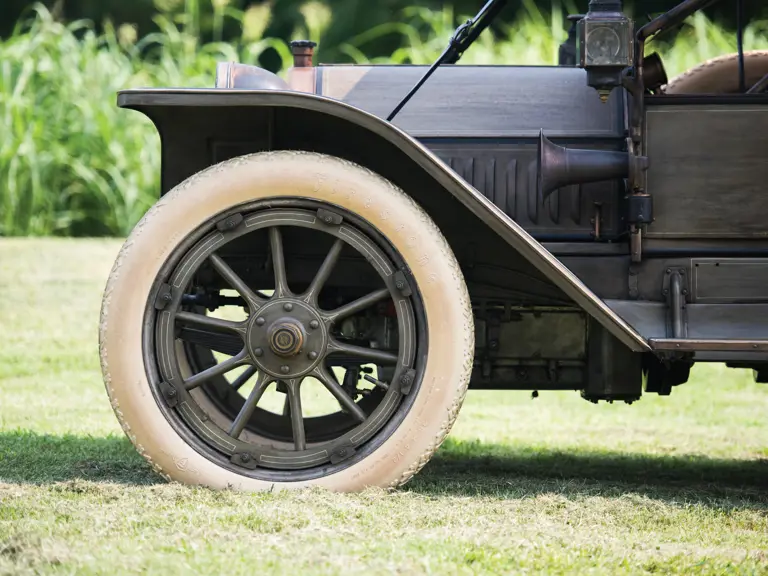
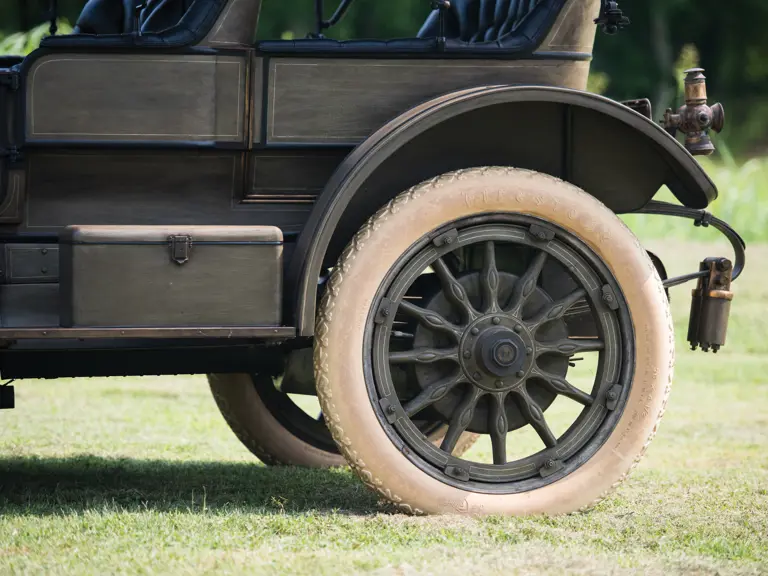
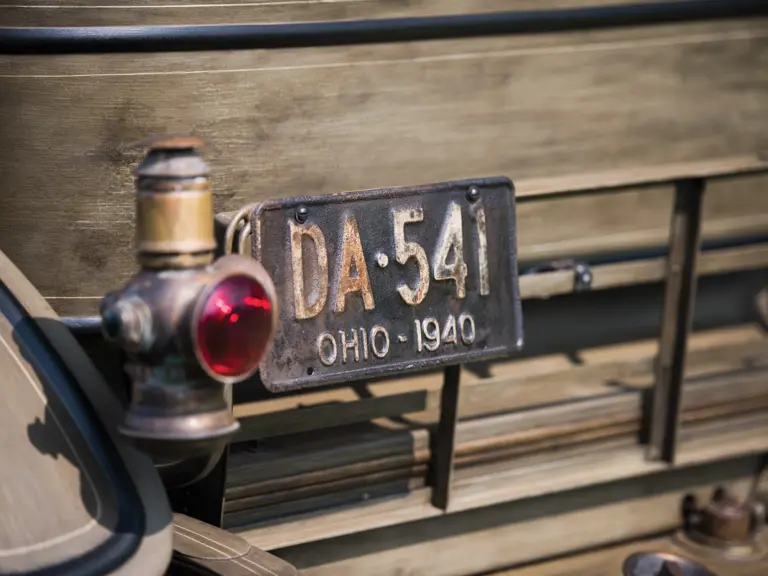
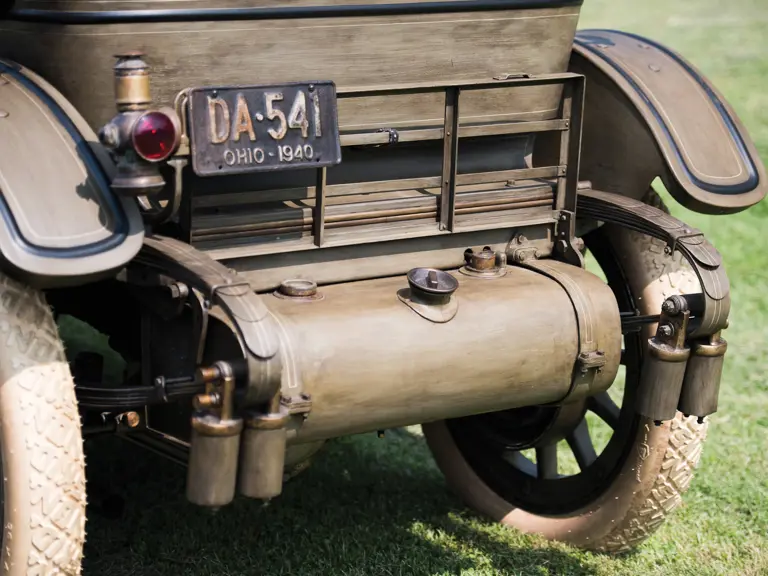

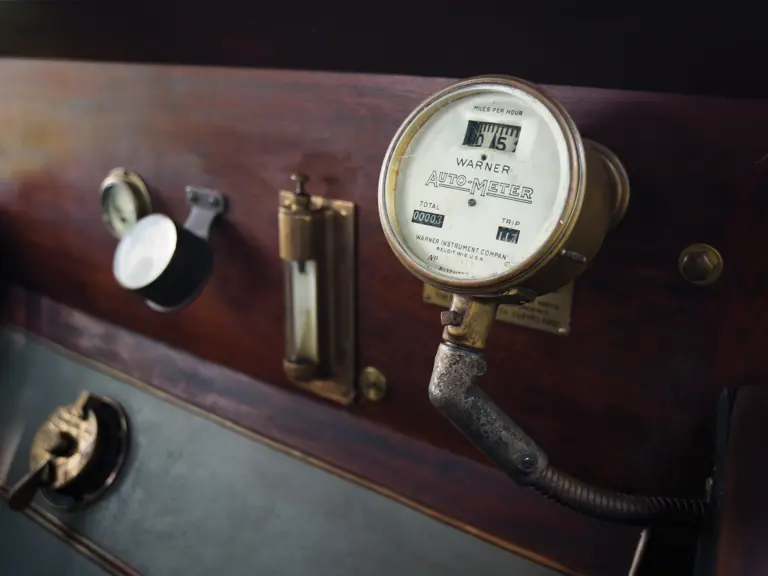
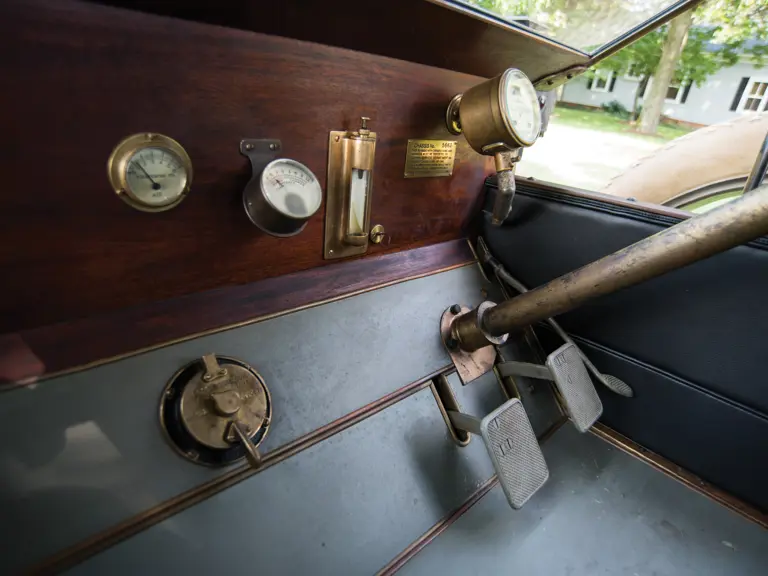
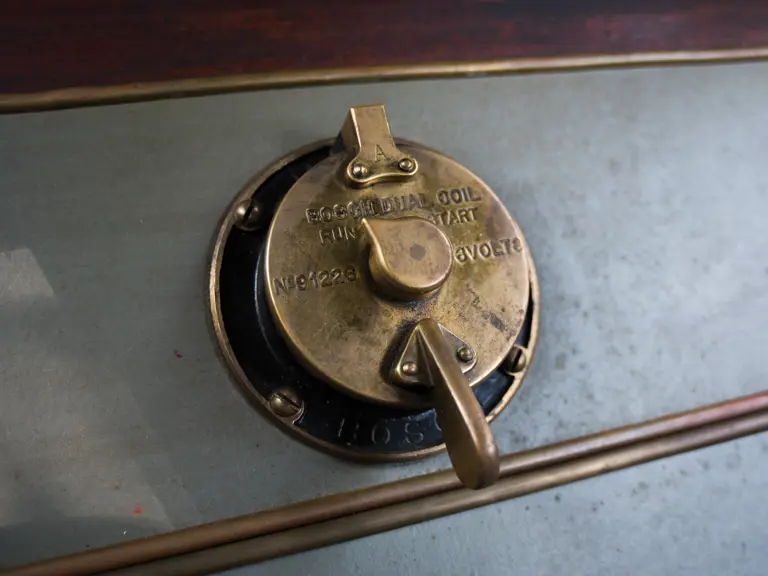
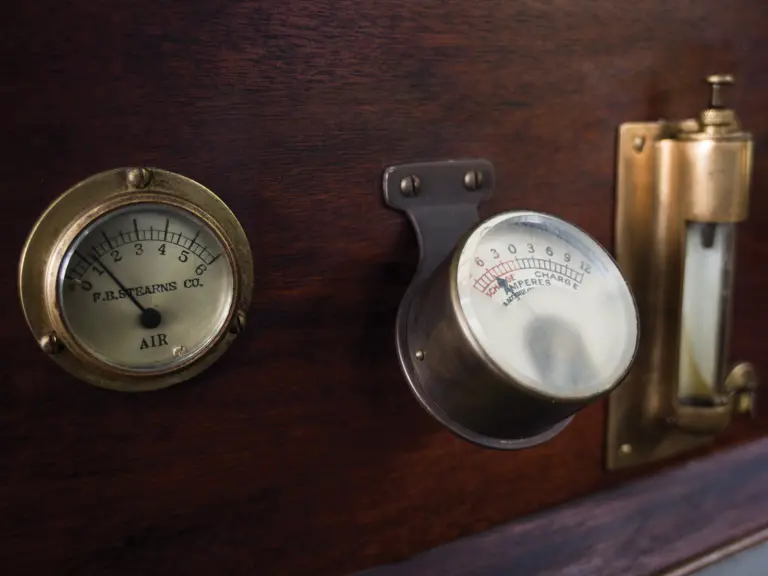
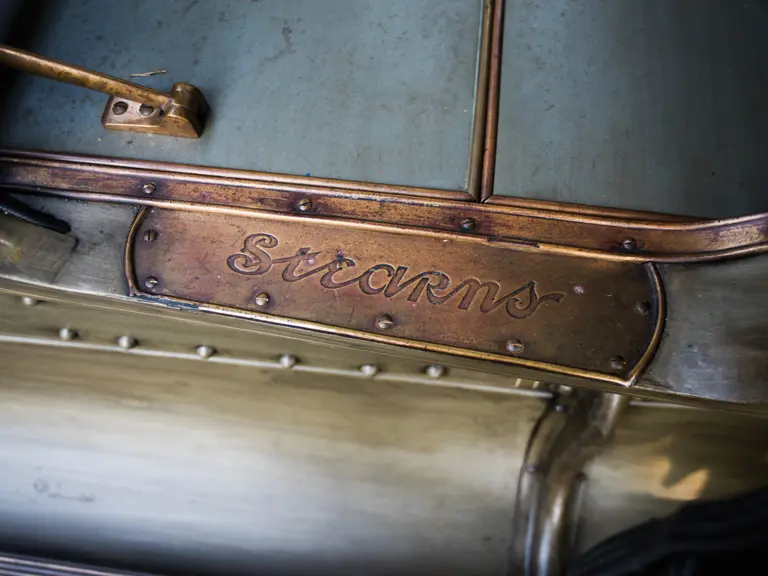


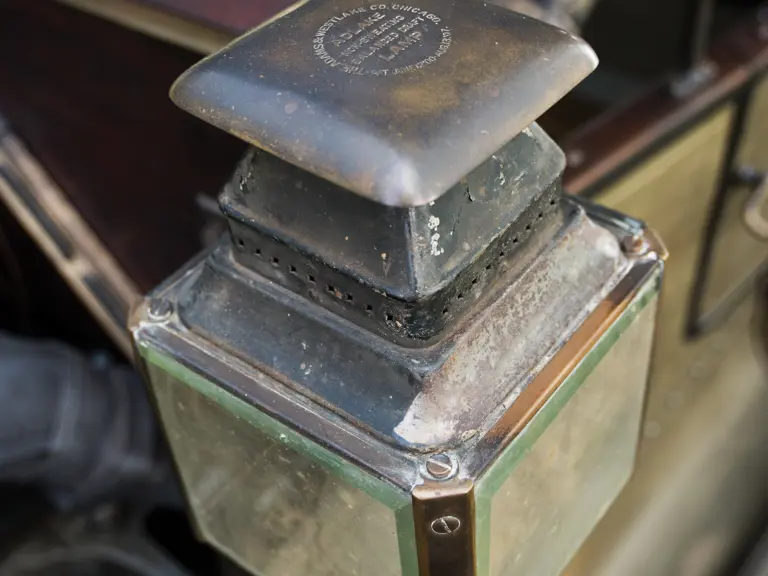
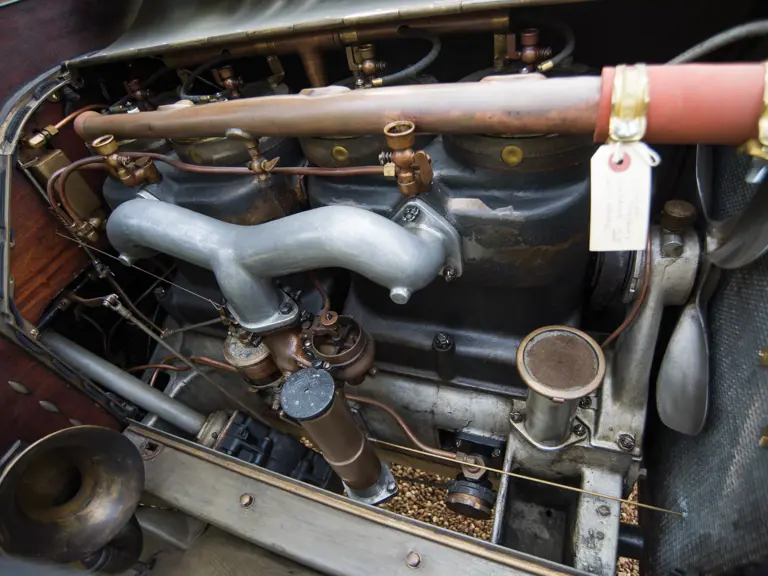
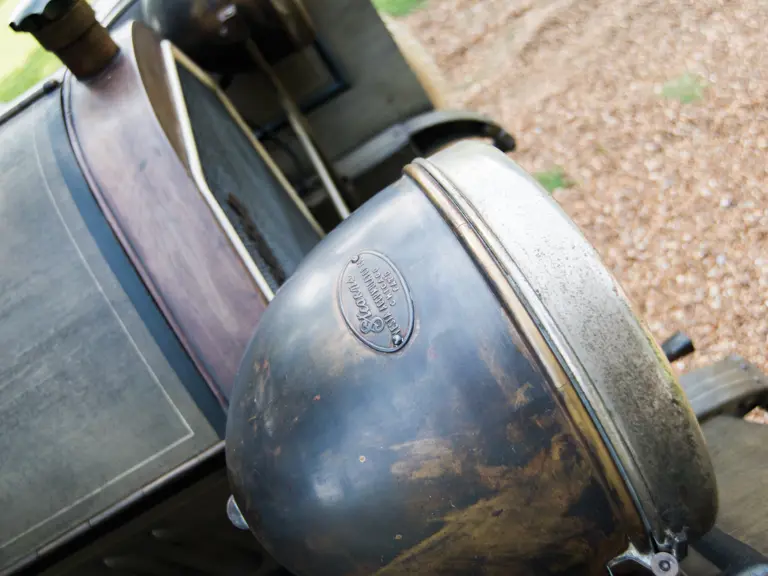

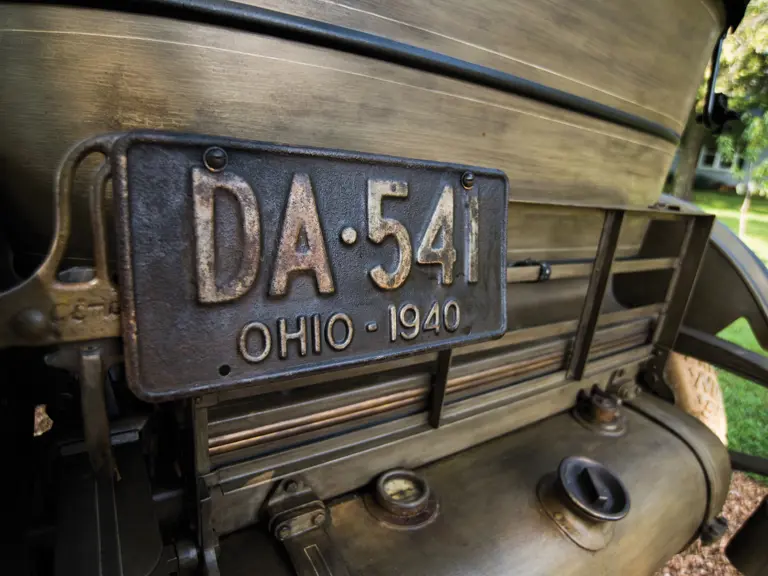
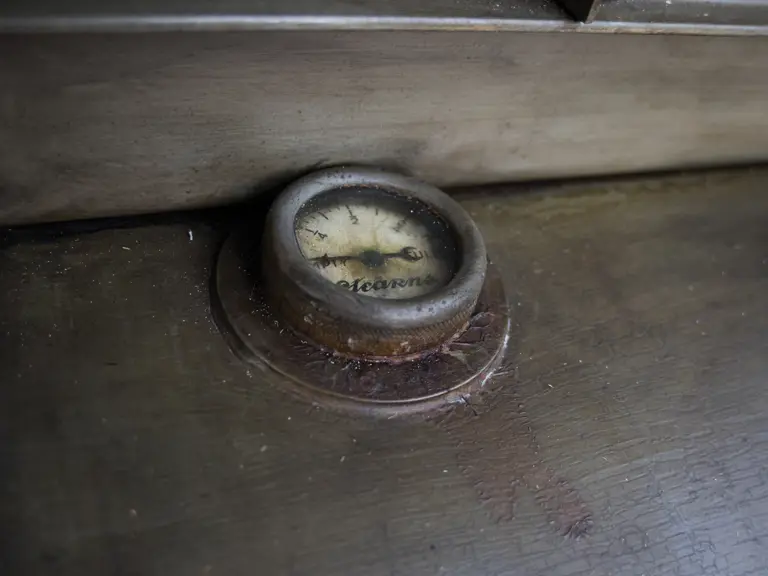

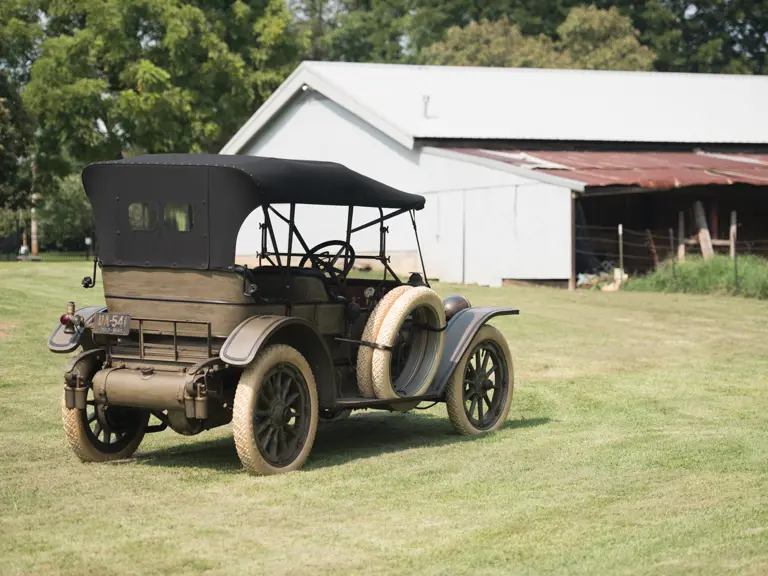
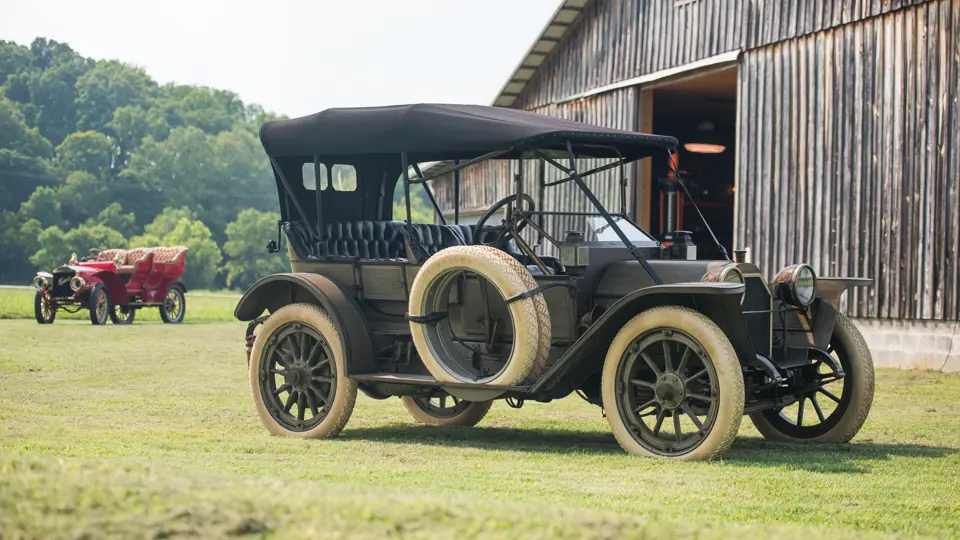
 | Hershey, Pennsylvania
| Hershey, Pennsylvania
